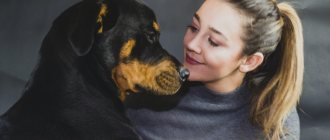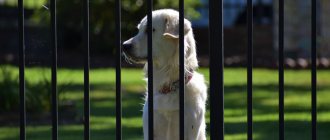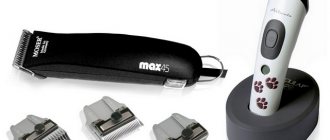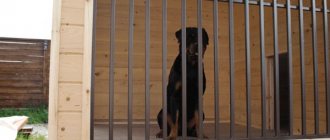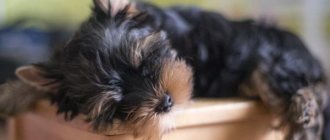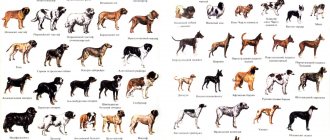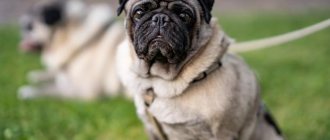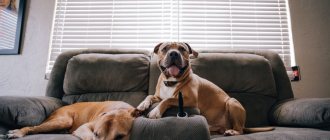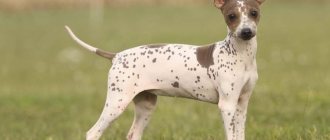When deciding to get a certain breed of dog, few people think about whether it will shed. And this is one of the key points, since excessively falling hair can be a difficult challenge, especially if the animal lives in an apartment. There are dogs that don't shed. This is an ideal option for those who do not want or cannot deal with pet hair flying everywhere.
If your pet sheds a lot, it can be a real nightmare for the household.
How to choose a dog
Those who suffer from allergies to dogs primarily consider adopting a hairless breed. Among them are the American Hairless Terrier, Chinese Crested, Xoloitzcuintle, and Peruvian Inca Orchid. But in fact, this list can be expanded to include breeds that do not shed and have almost no odor, for example, Bichon Frize, terriers, Affenpinscher, Coton de Tulear, and griffins.
Another way to limit contact with fur is to choose a breed without an undercoat. This is a water spaniel, a poodle. Finally, dogs whose coat structure resembles human hair will also not cause suffering to allergy sufferers. These are Maltese, Yorkshire Terrier, Shih Tzu.
Relatively hypoallergenic dogs include hairless breeds, animals without undercoat, and those who do not salivate frequently.
The second main irritant is a substance contained in the animal’s saliva. Consider purchasing small breeds that do not cause allergies. This could be an Affenpinscher, a terrier (Australian, Bedlington), a Bichon Frize, or a Chinese Crested.
To see if a breed is right for you, check out this list of dogs that rarely cause allergies.
Types of hair in dogs, their properties
In total, there are 6 types of dog hair, depending on the length and structure of the hair:
- medium length – shepherd dogs, chihuahuas, petit brabançons;
- long-haired - Afghan hounds, some subspecies of dachshunds, collies, toy terriers;
- short-haired or smooth type - English bulldog, bully, bull terrier, basenji;
- curly type – lapdogs, poodle;
- wirehaired - dachshunds, fox terriers, schnauzers;
- exotic type of coat - Mexican Hairless, Chinese Crested.
Additional Information! Dogs with an exotic coat type appear bald only in appearance. Their skin is covered with light, barely visible down.
Non-shedding terriers
Terriers are a breed bred for hunting burrowing animals and fighting rodents. Their main feature: they are not subject to shedding and have hypoallergenic wool. The terrier group includes Welsh, Border, Kerry Blue, Irish Soft Coated Wheaten, Black Russian and other breeds. Terriers have highly developed intelligence. They are small in size, energetic, unpretentious, and extremely attached to their owner.
Is it possible to trim a dog's whiskers?
Dogs vary in coat length and whisker length. In some they are invisible, lost among the main hairline, in others they protrude significantly. Professional dog grooming involves trimming almost the entire coat. Spitz dogs, for example, may have their whiskers cut off during grooming. But isn't this dangerous? Dogs have become so domesticated that they can confidently move around the apartment and know their daily diet very well, so the need for whiskers almost completely disappears. On the street, their sense of smell is enough to explore the world around them. Virbiss bulbs contain many nerve endings. The absence of a mustache can lead to incomplete information entering the brain , the dog will become irritable and even aggressive, and in adulthood this can lead to inhibition of the nervous system. You should especially not trim the whiskers of puppies under 2 months of age. Their nerve endings are just forming, and such manipulation can lead to a serious disorder of the nervous system.
Griffons
Griffons are small, affectionate indoor pets. The hypoallergenic breed is extremely good-natured and playful. The dog has coarse hair that needs to be trimmed regularly. In order not to disturb the structure of growing hair, dying hairs that become especially hard are plucked out. These are excellent watchdogs without the habit of barking in vain. They can become friends for children because they are not aggressive.
Why do dogs need mustaches?
You've probably noticed inconspicuous whiskers on your dog's cheeks. If cats have this habitual attribute, then why do dogs need mustaches?
All animals have hard hair around the eyes, on the cheeks, chin, the so-called “vibrissae” - sensitive long, hard hair that protrudes significantly above the coat. They have very sensitive bulbs, so with the help of them animals feel the surrounding objects and orient themselves in space. They act like a 6th sense organ, which is difficult to do without.
American Hairless Terrier
The American Hairless Terrier is a dog whose hair remains only in the area of the whiskers, eyebrows and chin. Thin, sparse, short hairs may grow on the body. These are companion dogs, energetic and intelligent. They may suffer from stress, overheating and will be completely useless when hunting. But they are in demand as a safe pet in families with asthmatics and allergy sufferers.
Why can you be allergic to dogs?
An allergic reaction is a pathological, hypersensitive response of the body's immune system to an external irritant.
In the case of dog allergies, we are talking about the following pathogens:
- Drops of saliva or urine.
- Secret of the sebaceous glands.
- Discharge from the sweat glands located on the pads of the feet and the tip of the nose.
- Skin particles (epithelium), dandruff.
The mechanism of allergy development is generally well studied. It is believed that an intolerance reaction occurs in cases where antibodies (class E immunoglobulins) produced by the body for protective purposes lead to its hypersensitivity.
However, the conditions under which this occurs are so varied that it is impossible to say with certainty whether the disease will manifest itself.
Common causes of allergies are:
- Hereditary factor. Indeed, numerous studies confirm that the likelihood of allergic manifestations is higher if direct relatives already have a confirmed allergy.
- Negative features of the external environment – poor environmental conditions in the area of residence.
- The reactivity of the body, that is, its ability to respond to environmental influences.
Many scientists support the view that the largest percentage of allergic cases are associated with a combination of several factors.
Chinese Crested
The Chinese Crested is a dog with little hair on its paws, tail and head. This is a friendly guard hypoallergenic breed that is good at detecting the mood of its owner. She does not tolerate loneliness well and gets along well with calm family members and other balanced dogs. The breed has a weak constitution and is therefore not recommended for families with children.
How much does a Yorkshire Terrier puppy cost?
Dogs of this breed have become very popular in Russia. More than 70 nurseries that specialize in breeding Yorkies are registered in the national club. You can buy a puppy either from a kennel or from someone else, and prices will vary greatly.
The price tag for babies from a nursery can be steep; it starts from 25 thousand rubles and can reach up to 70 thousand rubles. Private owners sell puppies cheaper - 7-14 thousand rubles. When choosing a pet, pay attention to its color, since deviations from the standard speak not so much about the decorative qualities of the dog, but about possible health problems in the future. Look for a puppy with documents, since the presence of a pedigree confirms that this is, indeed, a Yorkie, and not a cross between an unknown breed.
pixabay.com/
Hairless Xoloitzcuintle
Hairless Xoloitzcuintles are members of an ancient breed also known as the Mexican Hairless Dog. They have harmonious proportions. Their skin is smooth, sensitive, and needs protection from sunlight. These are companion dogs, attentive and calm. They keep guard, but do not bark, but begin to behave fussily, sensing strangers.
Names for Yorkshire Terrier
The British origin of the dog gives it every right to bear a foreign name. But you shouldn’t focus on aristocratic and noble nicknames. After all, the Yorkshire is a hard worker, a hunter and a helper, and therefore simpler nicknames for Yorkshire terrier boys would be appropriate. Bard, Vince, Jason, Lucky, Mini, Poof, Roger, Smart, Tice, Chuck, Harvey - a set of options that correspond to the character and characteristics of the breed.
Nicknames for girls of the Yorkshire Terrier can be much sweeter and gentle. After all, these creatures do not have such a cool disposition as boys. Therefore, the nicknames Bonya, Busya, Zaya, Mila, Iriska, Lyalya, Fairy, Fifa, Chika, Lapka, Tiffany, Eva are suitable for them.
Irish Water Spaniel
The Irish Water Spaniel is a dog with a dense, stocky body and thick coat with almost no undercoat. This is an exception among spaniels, which tend to shed their hair. Their character is active and mobile, their intelligence is developed, like all hunting breeds. Such dogs need long walks near bodies of water, as they love to swim.
Physiology of the molting process
Any dog with hair sheds. This is a normal, physiological process. Wools have their own growth phase, the duration of which also varies for different breeds. Dead or damaged hairs periodically die off, being replaced by new, young and strong ones.
Seasonal shedding, which occurs twice a year - in spring and autumn, is explained by temperature changes. In the spring, when it gets warmer, the animal's body begins to shed the old undercoat so that lighter hair grows in its place. In autumn, before the winter cold, the reverse process occurs - light hairs are replaced by warm and thicker ones, which can protect the animal from frost.
Daily brushing will help your hair renew itself faster and make it easier to get through this period.
Miniature Poodle
The Miniature Poodle is a non-shedding, hypoallergenic breed with a soft, silky coat. If the hairs fall out, they remain in a thick coat and are not spread throughout the house. The dog needs to be brushed once a week and cut from time to time. Poodles get along well with children, they are playful, active, and jumping. And their thick coat allows you to create beautiful, original haircuts.
Yorkshire Terrier color
The color and quality of the coat is one of the main indicators of compliance with the breed standard. Yorkshire Terrier puppies are born completely black, with several “tan” spots on the face, hind legs, chest and under the tail. Over time, the color begins to change, but it is almost impossible to understand exactly what it will become. Although breeders initially “cull” puppies that were born without the characteristic tan spots. It is not customary to expect that the color of such babies will correspond to the standard.
As a dog gets older, its coat becomes lighter. In a professional environment, the change in color is called recoloring. It starts from the head: golden-bronze takes the place of black or brown fur. The steel color appears more and more on the neck and back. Gradually, no black spots remain on the head at all, and the body acquires a characteristic dark, bluish-steel color. There should be no inclusions of other shades: the wool shimmers only in transitions from dark to light. Recoloration can last quite a long time; Yorkshire terriers usually acquire their “finished” color by two to three years.
The quality of wool also changes. In puppies it can be fluffy, but by adulthood it should become absolutely even throughout the entire body and silky. It is noted that dogs whose color is dominated by light tones usually have better coat quality than dark ones. This does not apply to Yorkshire Terriers and Biewers. Black and white babies were bred in Germany a little over 30 years ago, and the breed standard was approved only in 2007. Their color may be more original: with a transition from golden to black, with a luxurious white chest.
pixabay.com/
Giant Schnauzer
The Giant Schnauzer is a large breed with a hard top coat that prevents the undercoat from falling apart after shedding. This will protect you from allergy attacks, but will require weekly combing and haircuts once every 2 months. Dogs have a balanced temperament and well-developed senses. This is a hardy and very loyal service breed.
What are they needed for
Alas, science still cannot give a definite answer to this question. Some experts believe that the dog's muzzle is decorated with whiskers in order to provide a tactile sense organ. Indeed, in a state of tension, animals protrude their whiskers, putting them forward and as if feeling a suspicious object or a dangerous enemy. However, for dogs with a keen sense of smell this is simply unnecessary - they already receive all the important information about animals and any things. Well, sticking your nose into a potentially dangerous place to explore it is not the best decision from the point of view of common sense.
Others give a completely different answer when asked why dogs need mustaches. They believe that thanks to this sense organ, animals receive a more holistic picture of the world. For example, they are surprisingly sensitive to the strength and direction of the wind. This already seems to be true. If people receive most of their information through vision, then in dogs the sense of smell comes first. Having the ability to sense smells and at the same time the direction and strength of the wind, they form a much more accurate picture of the world. This is especially important in the wild, for example, when hunting, or vice versa, in the case when a dog or wolf themselves becomes the prey of a more dangerous predator.
In such a situation, the nose together with the mustache allows you to recreate the most accurate picture of the world even in complete darkness, reliably tracking down prey or escaping from a stronger enemy.
Samoyed
The Samoyed is a relatively hypoallergenic breed with a coarse, thick white coat. A strong, hardy medium-sized dog that takes care of its own hygiene and has no odor. The Samoyed sheds twice a year, completely changing its thick undercoat, which falls out in clumps. During the period between molts, it is necessary to comb your pet 2-3 times a week so that its beautiful fur does not get tangled.
The best way to determine if a dog is right for you is to spend an hour or two with it. If no allergic reaction occurs during this time, the animal may well become your pet. Remember: allergies are sometimes caused by a specific protein that forms on the dog’s skin. To neutralize it, it is enough to regularly bathe and clean your pet.
Rate this article 3.3 3.3 (5 ratings)
List of non-shedding breeds
Non-shedding dogs are a myth. But low-shedding animals, in which this process is not noticeable at all, do exist. And these are not only decorative breeds, but also animals of quite impressive size.
Small dogs
In addition to the absence of excessive hair loss, one of the pleasant features of non-shedding pets is that the dog is odorless. These animals include the following breeds:
- The Yorkshire Terrier is a companion dog that gets along well with all family members. Height from 15 to 17 cm, weight from 2 to 3.2 kg. Does not require special care. It is enough to get a haircut once every few months.
- Maltese lap dog - height at withers from 20 to 25 cm, weight from 3 to 4.5 kg. Sheds little due to the lack of undercoat.
- Brussels Griffon - height 17-20 cm, weight from 3 to 7 kg. The fur does not come out, but it requires periodic plucking.
- Shih Tzu - grows up to 27 cm, weighs from 4 to 8 kg. The coat is thick and requires frequent brushing and bathing.
- The Chinese Crested is a dog with hair instead of fur. Height up to 33 cm, weight up to 5.5 kg. Hair grows on the paws and head, although there is a type of breed that is completely covered with hair. Requires careful hygienic care, because the wool tends to get tangled.
Additional Information! For miniature breeds, it is enough to trim them once every 2-3 months to keep their coat in good condition.
The lapdog is a unique example, despite its long hair, it does not shed
Average
Not only a small decorative dog is distinguished by the absence of falling hairs and an unpleasant odor. Such characteristics are also characteristic of medium-sized animals. Names of the most common breeds:
- poodle;
- Basenji. An interesting feature of the breed is the absence of barking, which is why it is called the “African silent one”;
- Peruvian bald - the skin is covered with barely visible fluff;
- Mexican Hairless - the breed consists of several subspecies, both quite large in size and very miniature;
- Portuguese Water Dog - no shedding hair, but needs trimming.
Medium-sized dogs that do not smell like dogs, regardless of the type of coat, periodically change hairs, but they fall out so little that it goes unnoticed.
Big dogs
Many people think that large dogs are smelly and shed a lot. But that's not true. Therefore, when choosing a puppy, you should know which dogs do not shed but still have thick hair:
- Tibetan Terrier;
- Irish Wheaten Terrier;
- Italian greyhound;
- fox terrier;
- Scottish Terrier.
Additional Information! Surprisingly, the Komondor breed, which is distinguished by its incredibly thick and long hair curled into dreadlocks, is not prone to hair loss at all.
It's hard to believe that the Komondor doesn't shed
Schnauzers
The beard, mustache and bangs are the “calling card” of the Schnauzer. The family includes 3 independent, outwardly similar breeds. They were bred in Germany, but each has its own selection path, character, size:
- Giant Schnauzers are large dogs with a height of 60–70 cm at the withers. Color black or pepper and salt.
- Miniature Schnauzer - medium size 45 - 50 cm. Colors like their larger counterparts.
Pepper and salt Miniature Schnauzer.
- Miniature Schnauzers are dwarf dogs 30–35 cm tall. This is the smallest service breed. In addition to the listed colors, silver-black and white are allowed.
The hard coat of Schnauzers does not shed on its own, so it is regularly plucked. Show dogs are clipped on the back and sides. A “skirt” is left along the bottom of the body and on the paws. The beard and mustache are not shortened much, but only trimmed along the edge.
Schnauzers have earned a reputation as highly trainable, non-argumentative animals with versatile abilities. They serve in the army, police, and work as personal bodyguards. They take prizes in canine sports. Schnauzer puppies grow into loyal companions and family pets.
Why do cats need whiskers?
Cats' whiskers are much longer, thicker and thicker than dogs' whiskers. You can even see the “eyebrows” above the eyes. Cats are naturally more flexible, they love to climb trees, and they can crawl into a seemingly tiny hole. This is where a mustache comes in handy. They use them as hands, feeling the surrounding space . Some experts believe that the mustache corresponds to the proportions of the body, i.e. the wider the cat, the larger the whiskers. Others claim that cats with poor eyesight have larger whiskers. This is quite logical, because vibrissae help adapt to the environment. Therefore, do not allow your cat to lose its whiskers, for example, when playing with children. After all, little children are so curious that they can cut off a cat’s whiskers. Lost mustache - lost orientation in space.
All pets have very sensitive fur; they can feel a light touch even in their sleep. And the mustache is a bundle of nerves, another sensory organ. This part of the body is vital for all four-legged animals.
Sources:
https://fb.ru/article/403991/zachem-sobakam-usyi-i-mojno-li-ih-postrigat https://zen.yandex.ru/media/id/5c59e42abf9a4700b0f74fec/5d383b95c0dcf200ad8e3260 https://puffy- shop.ru/blog/entry/370-zachem-sobakam-usy
Medium longhaired dog breeds
Collie
The second name of the breed is the Scottish Sheepdog, first mentioned in the 14th century. This is a lovely herding dog, common in the highlands of England and Scotland. She has passed on from generation to generation the feeling of bringing everyone together so that no one strays too far from each other.
The coat has a rich color: tricolor, red, marbled or light sable. Particular importance is given to the white collar, tips of the paws and tail, which according to the standard must be white.
Collies can also be kept in urban environments. It is necessary to walk the dog for a long time every day, take care of the coat, and regularly comb and bathe the dog. Lately, the Shetland Sheepdog has been chosen as a companion dog because it is intelligent and obedient. She can be a guide for blind people, because she is able to adapt to her owner’s mood and listen to him in everything.
Cocker Spaniel
Representatives of long-haired dogs are descendants of hunting breeds. Despite this, he has recently fallen in love with many people and lives with them as a member of the family. They have a pleasant appearance and excellent manners.
Cocker Spaniels boast a soft, silky, long, curly coat with a dense, straight undercoat. The coat color comes in a variety of shades: gold, red, white, brown and many other mixed tones.
Dogs of this breed move gracefully, smoothly and gracefully, it may seem that they are floating without touching the surface of the ground. They attract others due to their playfulness and responsiveness, they love to be close to their owner and get along with small children.
You need to constantly take care of your Cocker Spaniel, monitor its diet, do not overfeed it, and give it certain physical activities. Also, the dog’s long hair requires special care: regular combing, cutting and trimming.
Chow chow
Long-haired Chow Chow dogs appeared 3,000 years ago; for a long time they were considered descendants of lions, bears, and polar wolves. They were revered by the Chinese nobility and clergy.
Sacred Chow Chows guarded temples, hunted birds and large animals, and dragged carts and other loads. After many years they gained respect and became devoted friends.
Now individuals of this breed do not hunt, but this has not affected their working ability. They will be able to protect their owners at any time if danger threatens.
The Chow Chow has unique external features:
- blue tongue;
- unnatural gait;
- leonine appearance;
- wool that looks like a bear's fur coat.
Long-haired Chow Chows lead a passive lifestyle, so owners of a modest apartment can afford to have a “teddy bear” in their home. The key to a socialized and kind pet is early upbringing. Then he will be able to distinguish “friends” from “strangers,” identify the threat and eliminate it. However, families with small children should not have such a pet.
Longhaired German Shepherd
The breed became famous at the beginning of the 20th century, although at first a shepherd with long hair was considered a waste. Then everything changed and a club of lovers of this dog was founded; the long and luxurious coat began to be valued and considered an adornment for individuals. The German Shepherd was bred to serve and herd sheep, but later it changed its role as a shepherd and became a companion or even a family member.
Representatives of the breed have soft and thick hair. They shed only during the molting period and require regular brushing. They are active, so they need walking 2-3 times a day, playing and jogging while walking.
The German Shepherd is kind, friendly, loyal, and becomes attached to its family and owner. Recommended for families with children. Thanks to her high intelligence, she is able to sense the child’s mood and provide protection at the right time. It is necessary to train from the first days the dog appears in the house.
English Setter
English Setter
The long-haired Setter dog is considered a purely English breed and took part in hunting. She is kind, psychologically balanced, intelligent, amenable to training and training, has a positive attitude towards individuals of other breeds and species, and loves to communicate with people.
If earlier a representative of the English Setter was bred for hunting raids, now they show themselves as devoted friends and love to play with children. Due to their violent temperament, the breed requires long-term training, so you will have to be patient and achieve the desired result.
Setters have a long, wavy coat that is often ruffled and matted, especially around the ears, chest and tail. After walks, the dog should be combed well, then the coat will return to its previous appearance, softness and shine. It is necessary to regularly clean the ears and rinse the eyes so that the Setter feels healthy and happy and makes his family happy.
